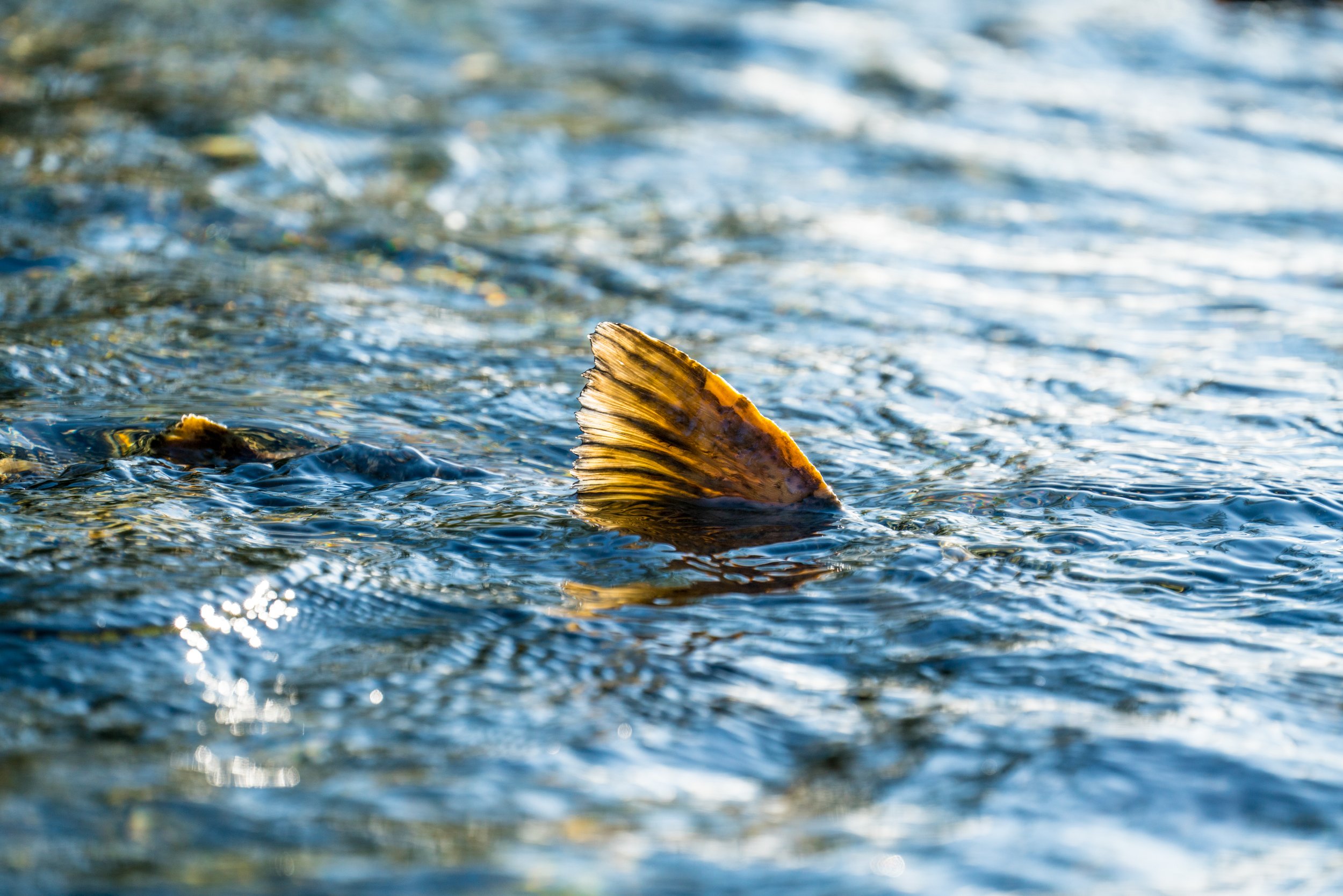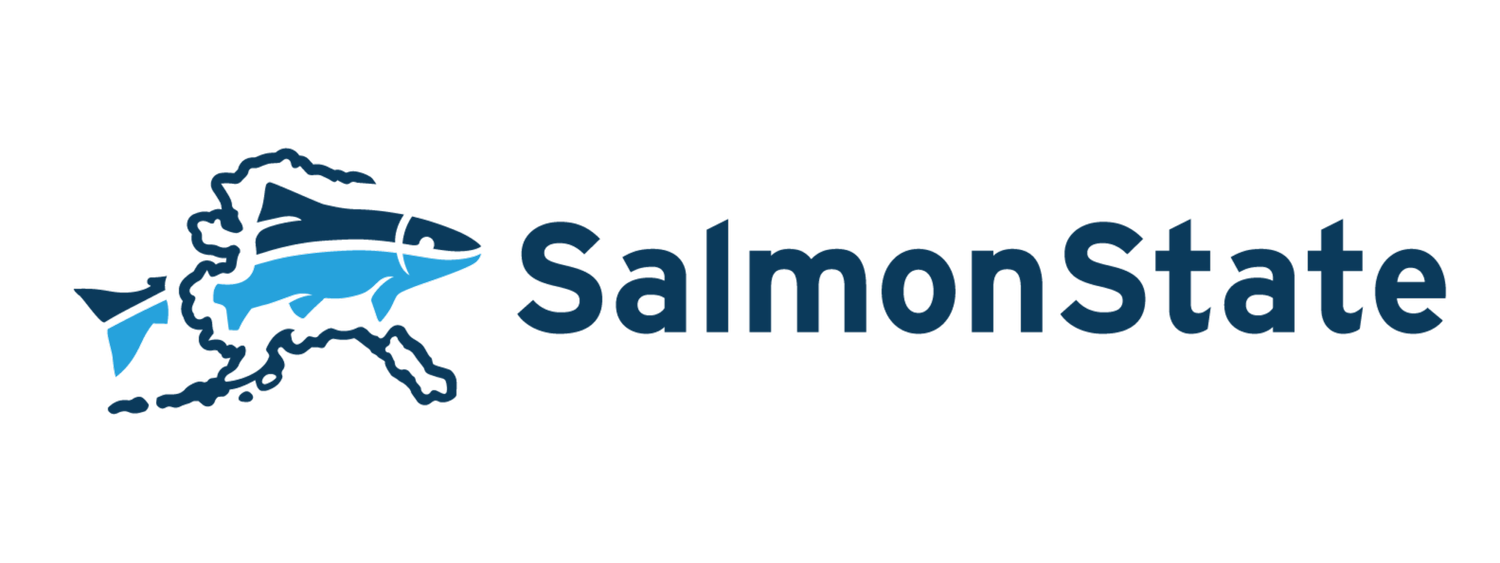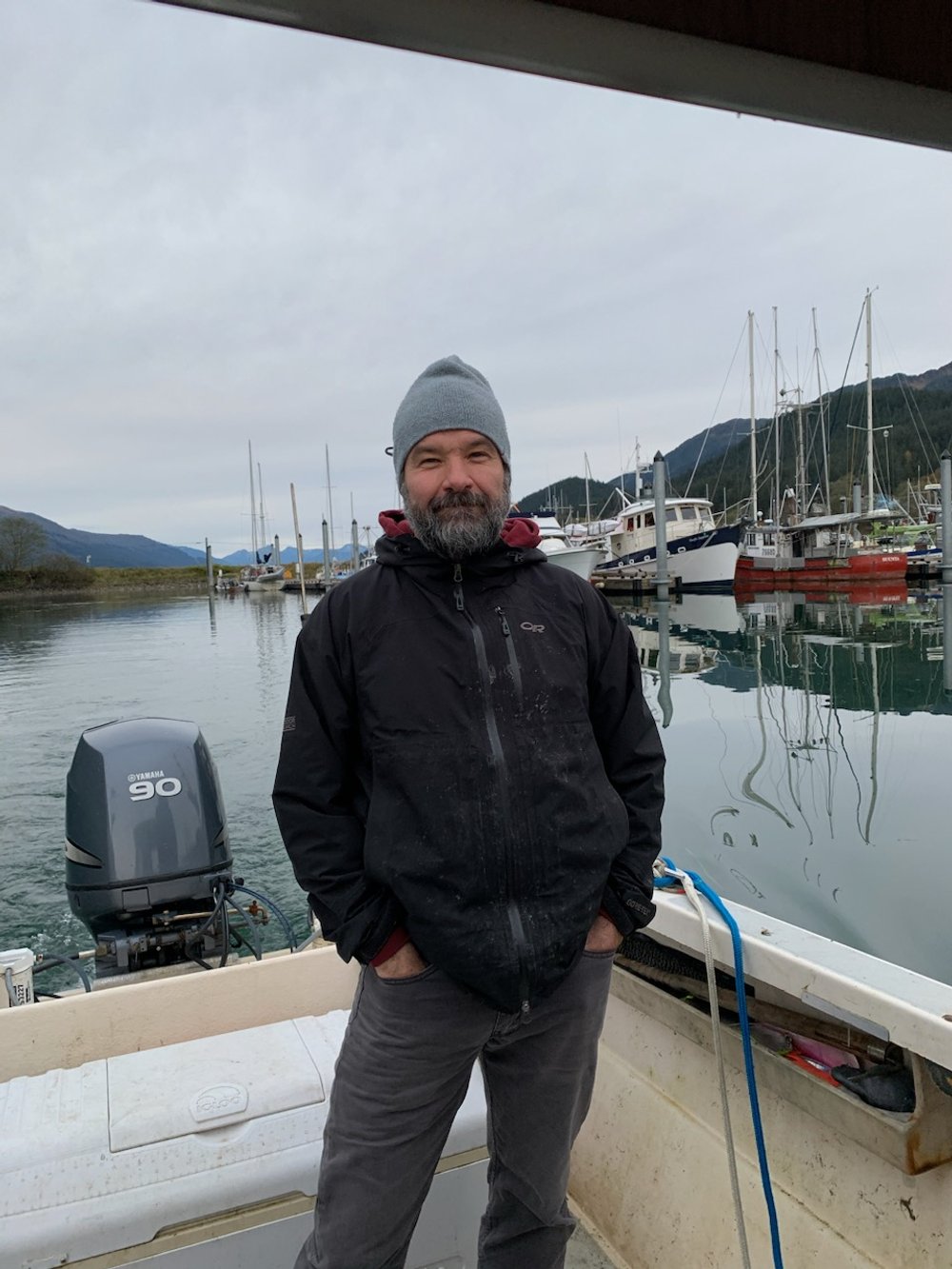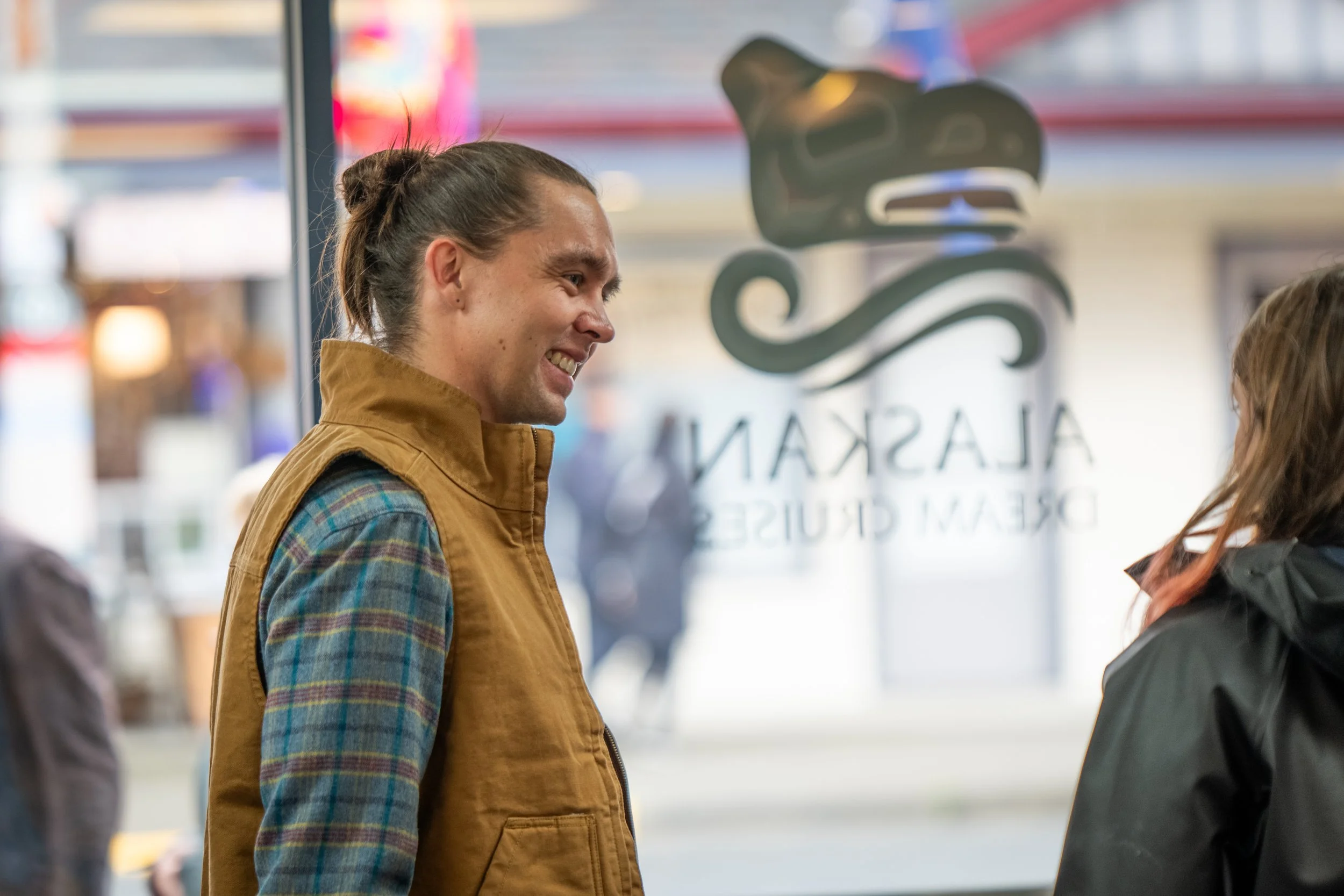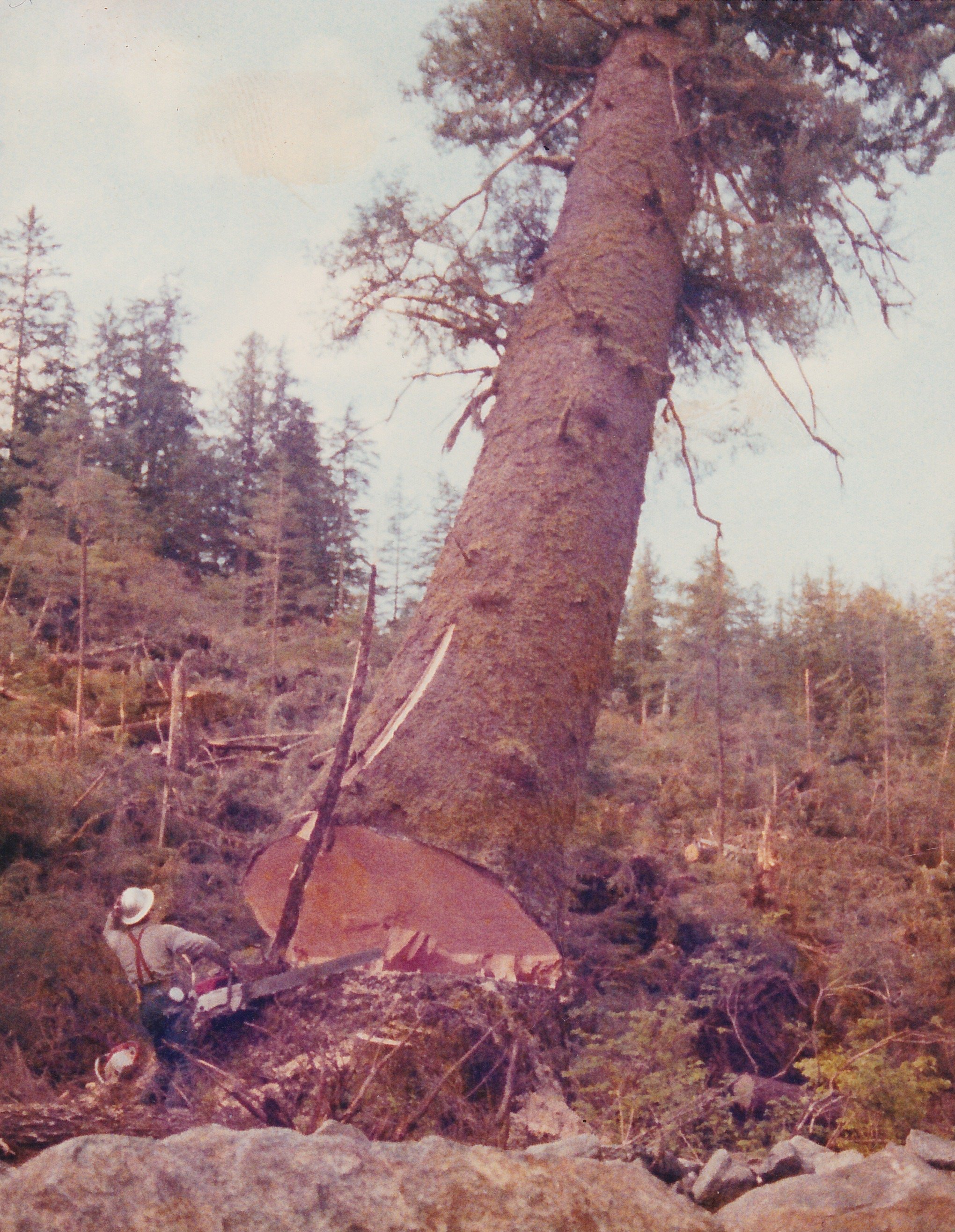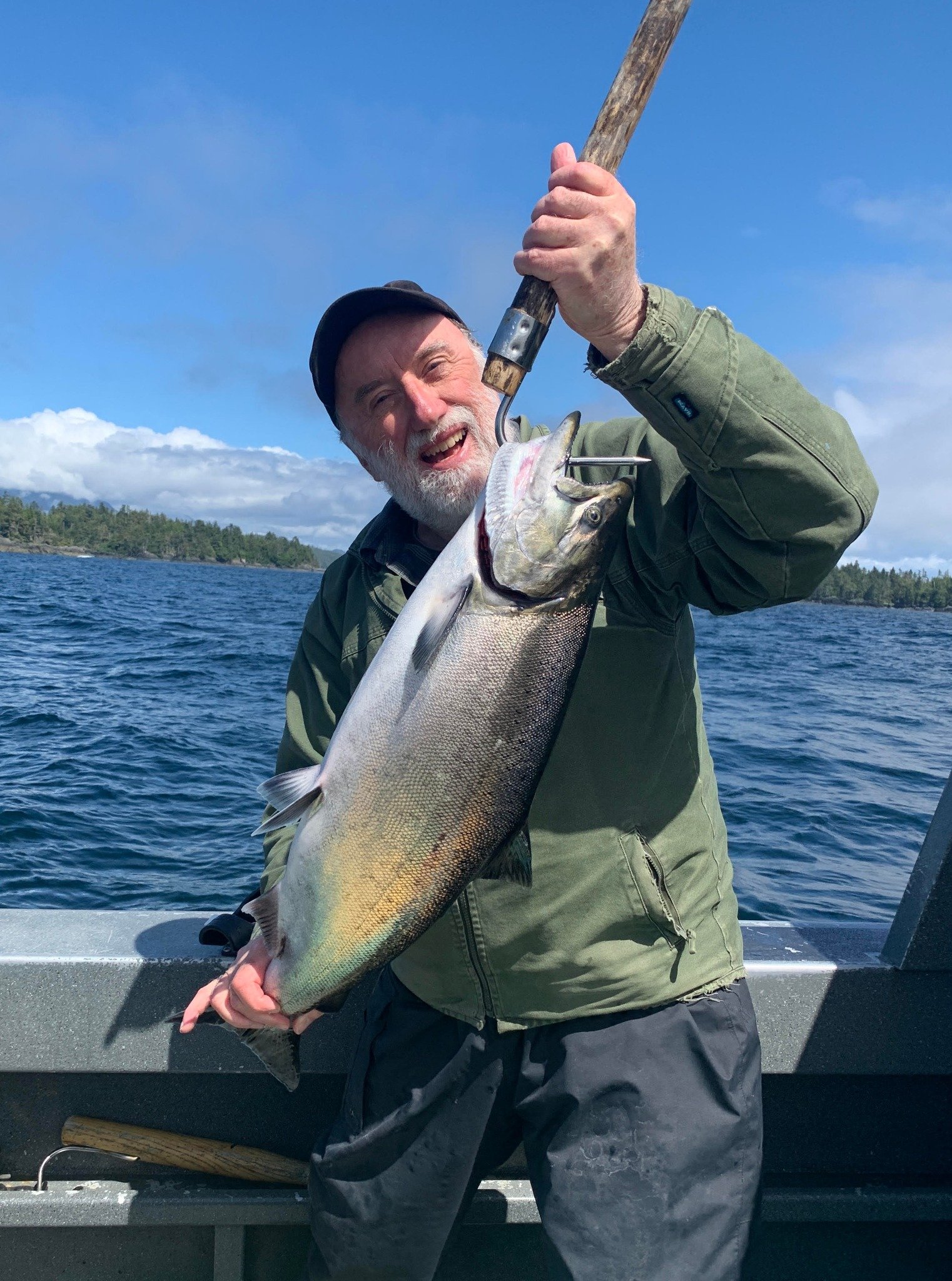
Salmon
Stories
“I have a cabin in Deshka Landing, on the Susitna River. Originally it was my parents’. They bought the property when I was 10 or 11, but even before then, we would go up there all the time to do a lot of salmon fishing, and go camping there. “
Featured Salmon Story
Bristol Bay
"I was born in Dillingham back in 1961. My folks came to Bristol Bay in 1948. They worked out of Clark’s Point Cannery on the Nushagak. My dad, Denny, started out commercial fishing out of Clark’s Point — he was able to talk his way onto a boat. While at Clark’s Point my mom, Jan, had her first child, Katrina, who was born in the old school house near the cannery. After their time at Clark’s Point they were able to apply for a GI Bill homestead.”
"Growing up as a kid in the summers in Egegik, I remember at the peak of summer the grass was taller than I was. It was always a fun and mysterious thing. My friends and I would chase rabbits in the grass, and my parents would be out fishing. It was fun growing up in a community where everything revolved around salmon, the tides, and the weather.”
“When I was growing up out at Pope Vannoy, on the south side of Lake Iliamna, we would swim a lot in the summertime, and I really enjoyed fishing with my Grandpa. I just had a willow pole with a hook on it — it was pretty simple. But we must have had a lot of trout then, because it was so easy to catch fish. I remember one day I caught two at the same time on one hook. I was so impressed!”
"The first time I laid eyes on the Kvichak River was mid-May 1994, and the clarity of the river was unbelievable. I had never seen anything so clear, and there was so much of it— a massive wide bodied river flowing gin clear. Mesmerizing.”
“Salmon are everything. They provide sustenance for us. In many ways too, salmon have been teachers. I’ve just grown as a human in ways that I think are really important to grow as a human, and I feel like it’s because of my salmon life that I’ve been able to do that.”
“I got out of high school. I got on the oil pipeline with BP. And within a year, I was buying a Bristol Bay boat permit with my brothers, and we all started fishing. I got married, raised a family, and my three sons all starting working on the boat when they were 10 years old.”
“Some of the most iconic bear images ever captured are from Bristol Bay. You think of the Bristol Bay fish that go up the Brooks River— that is the most popular destination, maybe in the world. So when you think of Alaska, that image of the bear snatching the salmon out of the air at Brooks Falls is close to the top.”
“Sometimes with Bristol Bay, you don’t know until you know. You’ve got to just experience the fishing and the beauty of the area. Pictures and even videos don’t do it justice. Not even close. Once you get up there, it’s a totally different feeling. You see everything, you’re experiencing everything, you feel everything— it’s so much different.”
“In 2005, 3 years after graduating, a Dillingham community member and business owner dropped this challenge and called me up and said, ‘Hey I know you’re an artist, and I want you to paint me this mural.’ I thought, ‘I don’t even know what a mural is, man. What are you talking about?’ And he said, ‘It’s just a bigger version of a painting, you could do it really easily. Maybe it could say Welcome to Dillingham.’ And then he said, ‘Everyone is going to want one of these, you just wait and see.’ He paid me to create the first public mural that I’ve ever done, on Bristol Express.”
“My brother and I grew up very remotely, on an Alaskan inholding homestead in the Becharof National Wildlife Refuge, on the Alaska Peninsula. My first memory that really stands out was catching a 12, 15 pound monster Dolly Varden on one of the nearby creeks. I was maybe six years old and barely able to get it in.”
I’m a fairly conservative individual. I typically vote Republican. I’m pro-development and I’m for the responsible use of our God-given resources. But this mine, in this location, could be catastrophic on so many levels.
Transboundary
“I first saw Camp 17, on the 15,000-square-mile Juneau Icefield, from Juneau’s Blackerby Ridge in the summer of 2011 or 2012. As a photographer who has done a lot of work with architecture and people on the edge of wilderness, I was really interested in the space visually. Those shiny tin can buildings surrounded by ice had a real effect on me. I came back to town to find that not a lot of people knew what was going on up there on the icefield.”
“Growing up I spent a lot of time on the water fishing with my dad and my grandpa in the waters around Juneau. I have a lot of memories of time spent on the boat waiting for a fish to bite, getting seasick, and processing fish. As I got older and in my teenage years I didn’t have as much interest in fishing, but continued to spend a lot of time on boating adventures with family and running around with cousins casting and setting crab pots.”
“I grew up in Port Townsend, Washington. My parents weren’t fishermen, but my maternal grandparents were. They lived in Port Angeles, on the Olympic Peninsula about an hour away from where we grew up. Summers, my parents would take us to our grandparents’ house and drop us off for 10 days at a time.”
"I had always heard stories about Alaska and especially from my dad, who traveled to Alaska from Minnesota every year to go fishing. The first time I ever visited Alaska was when I was in high school, during a family trip to Anchorage and Kodiak.”
"In 1970, I was 17, and I thought I was on my way to Vietnam. I wanted to see Southeast Alaska before Southeast Asia. So I saved up $262 and bought a standby ticket to Petersburg, to visit my sister and brother-in-law. After that visit, I planned to join the Navy before I turned 18 and got drafted. I had a lot of friends who went to Vietnam and came back not in one piece, or not at all.”
“I come from a family of nine children. Our life pretty much revolved around salmon, because we commercial fished. Growing up, we didn’t have a car, but when we got older and my dad wasn’t fishing, we would drive around in my car and look at all the fish in the different creeks between Ketchikan and Wrangell, wherever we’d go.”
“I caught my first king salmon on the Kenai River on my eighth birthday. It was kind of funny, because my folks were there with their friends, and hanging out around the fire, and I was so fired up to go fishing that I wanted to go at 5:30 in the morning. I was ready. But they said their friend whose boat they were on told them ‘Salmon here don’t even bite until 8:00, so you don’t have to worry about it. We can just hang out.’”
"A few years ago a friend and I floated down the Inklin, then down the Taku, and paddled home to Juneau. We felt like we were beating winter out of there. The leaves had fallen, and it was pretty low water. Super beautiful. The canyon on the Inklin might be one of my favorite memories on the Taku.”
“I grew up power-trolling with my dad in the Cross Sound area and fell in love with the fishery at a young age. I was inspired to buy a permit at 21 and fished with my boyfriend for two years before taking the plunge into buying the F/V Pacific Dream.”
“I’ve been on the Organized Village of Kake council, and in health care, for quite a while now. With the transboundary, there’s a close tie-in to health, and the impact mining could have. If we ever have a catastrophic event with a tailings dam on a transboundary river, it could affect all of our livelihood, and our traditional foods. Seaweed, crab, you name it.”
Tongass
“I'm Nate Catterson. I'm the District Ranger on the Yakutat Ranger District. I've lived in Yakutat for going on 24 years now.”
“I started working on trails the summer before my senior year in high school when I got a job for Sitka Trail Works. We spent the summer rebuilding the Sealion Cove Trail, the WWII Causeway, and trails around town, and I kinda caught the bug.”
Past clearcut logging and gravel mining left East Ohmer Creek with degraded fish habitat and stream function. Now, a coalition of partners have intervened to help nature restore the stream.
When some of the team working to restore this place were kids, Seven Mile Creek, just outside Klawock Lake on Prince of Wales Island, was home to strong returns of sockeye salmon. Those sockeye fed their families, both on the island and beyond it. But in 1987, the forest surrounding Seven Mile Creek was clearcut down to the creek banks. In later years, Klawock Lake’s once-prolific sockeye salmon run has plummeted.
"I grew up in New Hampshire and spent a lot of time outside in the White Mountains, which are gorgeous. It was really nice, but even then, I was always looking for something a little more.”
"I am so grateful for the way I was raised— we were completely off grid. We didn’t have TV, didn’t have internet, and the bears would chew through the phone cables, so sometimes we didn’t even have a phone.”
“I grew up in a mill town, Ketchikan. The Tongass was having a quarter of a billion board feet logged a year at that point. One year I’d be in a bay, and it would be amazing, wild old growth. The next year it would be a logging camp and then it would just be a clearcut. I saw a fair bit of that growing up— and kids don’t question that much. So I experienced it, and by the time I was a teenager, I started thinking, ‘You know what, this doesn’t seem to be the best idea, to be cutting a thousand acres at a time.’ I saw my fair share of landslides, washed out rivers, that kind of thing. That’s where my interest in conservation started.”
“When I was a young kid —about 10 or 12 — me and my cousin, who’s the same age, we went fishing with our uncles. Where we went there’s two salt-water-fed lakes, as well as fresh water coming down from the hills. You’ve got to go in there at a certain tide in order to get up into the lakes. And what we were there for was chum salmon, dog salmon, in the fall time. Me and my cousin, we thought it was just the greatest thing to be with our uncles, going on an adventure. And once we got up to the second lake — you have to go through the first one, and there’s a short stretch of river to get up to the second one — and it’s rather tricky, because there’s big rocks along the way. Once we got up there to where we’re going to fish, my uncles got off and they told us to stay with one of our other uncles on the boat to let the seine out of it.”
“Until I was in my late twenties, hunting was something my brother and my dad did. I moved away after high school, for college. I was gone ten years. One of the reasons I moved back was because anywhere else I lived, I missed the connection I had to the people, the land, and my culture. My dad took me hunting when I was 28, in 2014, and I got my first deer. Ever since then, it’s just something I’ve loved to do — hunting, and gathering your own food, and being able to provide for yourself. I feel like I missed out on so much in the ten years I was gone.”
“When I was in first grade, in 1954, we moved to Edna Bay. My stepfather worked down on the water, making rafts to deliver trees to the pulp mill. Edna Bay was one of the first big logging camps. We had a one-room schoolhouse with one teacher for all eight grades. As a kid on Prince of Wales, I saw big, perfect spruce. It was amazing how fast it was harvested. In those days they didn’t build roads. They mostly used the salmon streams to clear up and down, because it was open. Sometimes they did it when there were salmon in there.”
“I have a dream. In my dream, it’s 2028 and I’m hiking up the Kadashan River with my grandchildren, fifteen-year-old Maya and twelve-year-old Toby.”
“Shortly after graduating from high school, I got a job. It didn’t take me long to see it wasn’t working out. I grew up with an interest in the outdoors all my life, so I decided to go out west.”
West Su
“I’ve been out here on the Talachulitna for 16 years, since the 2008 economic crash. I was a masonry contractor in Oregon, and I just didn’t want to do it anymore. My wife asked me what I wanted to do, and I told her I wanted to go fishing. She said ‘Where?’ I said ‘Alaska.’ A year later we ended up in Anchorage, and the next day, we landed on the Talachulitna River.”
“My name is Gary. I own some property here on Alexander Creek and I’ve been here for about 25 years, building log cabins and enjoying a remote lifestyle.
My first experience on Alexander Creek occurred in 1974. I was flown out here as a part of a complimentary tour by my employer to enjoy silver salmon fishing along with some of my coworkers.”
“I'm Mike Mason, and I’m a lifelong Alaskan. I lived up in the Mat-Su Valley for most of my life and then I moved to Alexander Creek here in 1999, because I had this dream about living in the bush. I just figured it would be a weekend type thing. And within three months I moved here. I learned the way of life around here, and started boating. All the fishing back then was really good.”
“I have a cabin in Deshka Landing, on the Susitna River. Originally it was my parents’. They bought the property when I was 10 or 11, but even before then, we would go up there all the time to do a lot of salmon fishing, and go camping there. “
“I graduated from college with a nursing degree, and I came to Alaska to pay off my scholarship. I wanted to go to New York, to a busy emergency room situation. But I went to Anchorage, and worked at the Alaska Native Medical Center in the ICU. There, I met my husband Carl, who was an audiologist.”
“I grew up in Colorado, and my family exposed us to fishing, and camping. As I got older, I spent more time in the woods, and I was 14 when I started really getting into fly fishing. The moment I did it I was hooked — pardon the pun.”
Chignik
"Salmon is pretty much everything. We eat it every way possible. My whole family. My friends, their families, my aunts, uncles, cousins – everybody in Chignik. You eat it as much as you can. You smoke it, salt it, dry it, freeze it for the winter, can it. When my sister comes down we jar a bunch of fish for her. Salmon puts food on the table, literally and figuratively. We eat them and we make money to buy all of the other stuff. It puts a roof over our head.”
“Growing up, I spent summers in Chignik and winters in Kodiak. We’d cross Shelikof Strait, get the boats and gear ready, fish hard in the commercial season, and then catch and put away our subsistence harvest for the winter.”
Alaska
“I came to Alaska when I was 35 or 36, with an ex-husband who was a fisherman when the fisheries collapsed in New England. I was very immersed in fishing culture back there in New England. When I arrived I got a job at KMXT to produce their Alaska Fisheries report. It was an overview of fishing around the state.”
"If you walk into the Tongass for the first time, you might think it all looks the same. But then, you begin to learn more. It’s a magical and wonderful place. It’s not untouched, but parts of it still have a completely intact ecosystem with ancient old growth trees. It’s a privilege to live on the traditional land of the Tlingit people.”
"I’m a lifelong fisherman. My parents raised me on a fishing boat since I was 17 days old, commercial fishing for salmon and halibut.”
“The whole idea of the salmon forest being connected is that the nitrogen that salmon accumulate in the middle of the Pacific Ocean ultimately ends up in the canopy in these ancient forests, and spiders in the canopy still have that nitrogen from the middle of the ocean, it’s sort of, its eliminated the idea of the land and the sea being two separate things. I had no concept of this at all before.”
